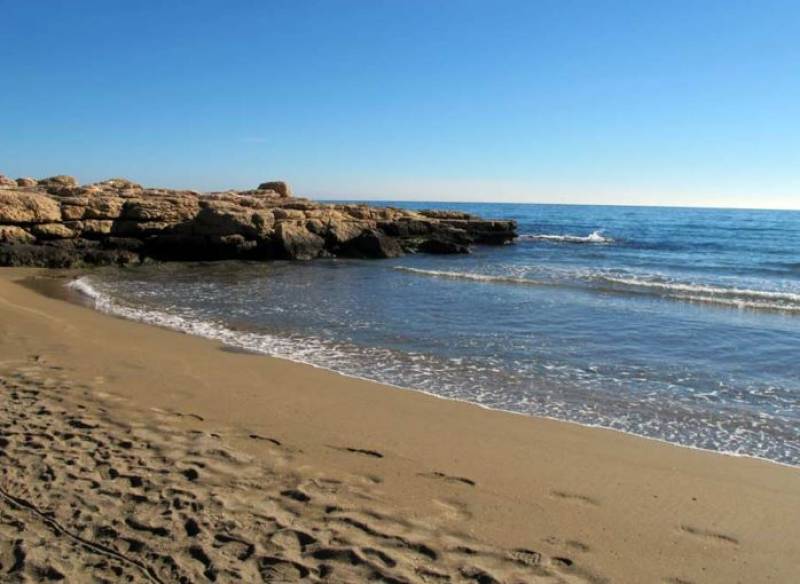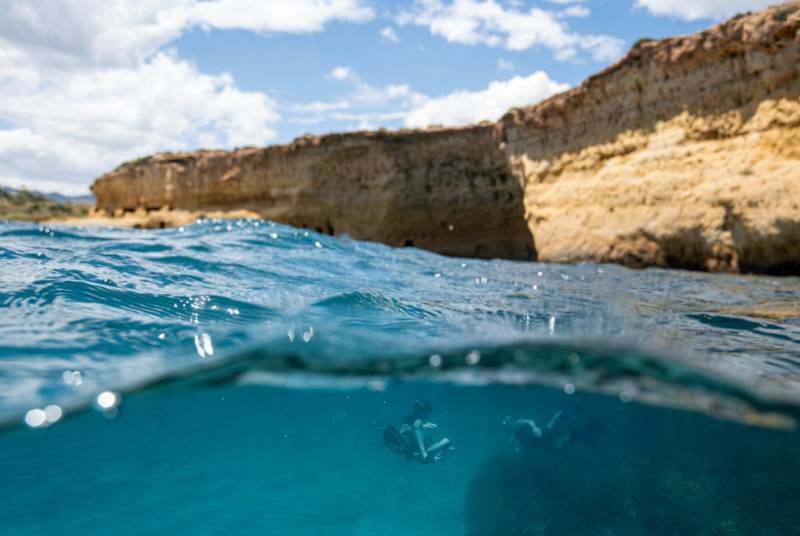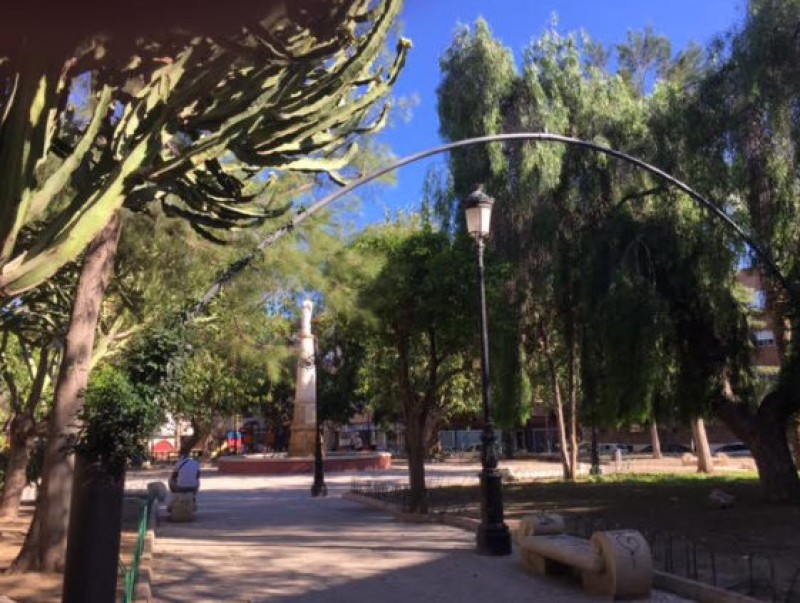article_detail
Outlying districts of Mazarron, La Majada
La Majada is just west of the town of Mazarrón and is home to the castle of Calentín
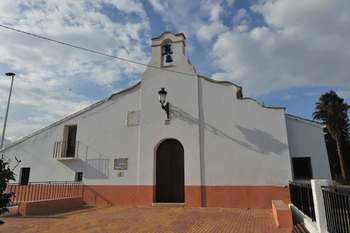 La Majada is a small hamlet 9 kilometres west of Mazarrón, with just 184 inhabitants according to the "padrón" or local register in 2021. Over 50 of these residents are non-Spaniards.
La Majada is a small hamlet 9 kilometres west of Mazarrón, with just 184 inhabitants according to the "padrón" or local register in 2021. Over 50 of these residents are non-Spaniards.
The name of the village derives from the areas of rest ("majadas") which shepherds sought for their flocks. As a population centre it is known to have existed during the Roman era, which lasted from the initial invasion in 209BC to the 4th century AD, during which time the occupiers exploited the area for its agriculture, fishing and mineral wealth.
La Majada is close to the Coto Fortuna mining area, with Roman ceramics remains showing that the Roman occupation of the mines extended to the surrounding areas, supplying both food and related products to the miners (to see more about Coto Fortuna, click for information about Leiva, which was at the heart of the activity).
However, by far the most important historical period for the village was the time of Moorish rule, following the fall of the Roman Empire, a period of occupancy which lasted from the 8th to the 13th century.
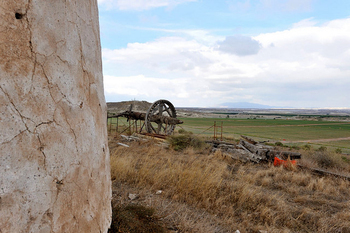 La Majada is home to the ruins of a castle, the Castillo de Calentín. This was mainly a Moorish fortress, built in the 12th century, although it is believed that previously the site on a prominent outcrop was occupied by a Roman fortification. It affods clear views of the surrounding countryside and a position of strategic power for those controlling the land and activities of the people living in it.
La Majada is home to the ruins of a castle, the Castillo de Calentín. This was mainly a Moorish fortress, built in the 12th century, although it is believed that previously the site on a prominent outcrop was occupied by a Roman fortification. It affods clear views of the surrounding countryside and a position of strategic power for those controlling the land and activities of the people living in it.
In the 13th century the Christian forces of Castilla occupied what is now the Region of Murcia.
Following the taking of Granada by the Catholic Monarchs in 1492, the territorial organization of the Spanish peninsula was restructured, and at the same time the arrival of peace and the development of administrative infrastructures made it easier for the mining industry of Mazarrón to be re-activated. The mines in the foothills of the surrounding mountains were re-opened in search of alum, which was needed not only for tanneries but also for glass-making and as a pharmaceutical.
In the second half of the 15th century the management of the mines was handed over to the Fajardo and Pacheco families, who exploited them either directly or rented them out .
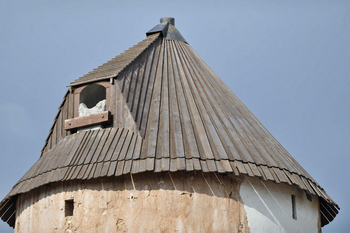 On 1st August 1572 Mazarrón was honoured with the privilege of independence and set up its own Town Hall. The municipality enjoyed its independence from the administrative and military demands of outside overlords, although the area continued to suffer constant raids by the Berber pirates from northern Africa.
On 1st August 1572 Mazarrón was honoured with the privilege of independence and set up its own Town Hall. The municipality enjoyed its independence from the administrative and military demands of outside overlords, although the area continued to suffer constant raids by the Berber pirates from northern Africa.
As the menace of the pirates died down, the area became increasingly important as an agricultural centre and La Majada assumed greater demographic and economic importance in the 18th century, when Cardinal Belluga authorized the construction of the local church of "Las Majadas" in 1735. The first church was located in El Recuenco, a terrace where the abundant crops of barley and wheat paid for the maintenance of a place of worship.
Mining activity was re-activated again between 1840 and 1913, bringing about important growth in the village, which until then had consisted of widespread farm dwellings. The agricultural resources of La Majada were augmented by income from the nearby mines in Coto Fortuna.
The gradual closure of the mines in the mid-20th century meant a forced return to agriculture for the inhabitants. The cereal crops had never been completely abandoned, as can be seen from the remains of flour mills throughout the countryside of Mazarrón, but now efforts were intensified to grow other profitable products.
Significant progress was finally achieved in the 1980s, when the village benefited, along with the rest of the area, from the arrival of the national irrigation water distribution network. In the Region of Murcia drip irrigation techniques were at the forefront of agricultural development, and in La Majada the most significant innovation was the growth of citrus fruits.
Today agriculture is still the main driving force in the village, with traditional Mediterranean crops grown alongside others requiring drip irrigation.
The church of La Majada
 There used to be seven small churches in the countryside around Mazarrón; Morata, Ifre, Gañuelas, Romeros, Leiva and Majada, as well as the so-called "Ermita nueva".
There used to be seven small churches in the countryside around Mazarrón; Morata, Ifre, Gañuelas, Romeros, Leiva and Majada, as well as the so-called "Ermita nueva".
It was Cardinal Belluga who ordered that the church be built in La Majada, and there is an inscription over the entrance which reads as follows:
"D. Luis Belluga, Bishop of Cartagena and Cardinal, gave licence to Laurencio Vivancos García and Juan Molino, neighbours of the Villa de Mazarrón, to build the church of Las Majadas on 21st March 1715". The church was completed under the direction of Maestro Ríos Marín on 13th November 1735, the chaplain being Doctor D. Pedro Zamora de Vivancos and his stewards Fernando Lardin Vivancos and Francisco Mendez Vidal.
Fiestas in La Majada
The fiestas of La Majada are held in honour of the Inmaculada Concepción, although with one notable peculiarity. The official date of this religious holiday is 8th December, but the fiestas are normally held in the first week of September in order to coincide with the time of year when farm workers are resting.
La Majada, the castle of Calentín
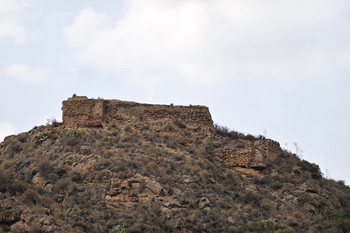 The Castillo de Calentín is a fortress near the village of La Majada, almost exactly on the boundary between the municipalities of Mazarrón and Lorca. The building stands on the crest of a hill in the "Campo de Calentín", and looks out over the gully of La Majada, a nearby spring, and the path from Gañuelas to Morata. It is also possible to see parts of the coastline of Mazarrón and Lorca.
The Castillo de Calentín is a fortress near the village of La Majada, almost exactly on the boundary between the municipalities of Mazarrón and Lorca. The building stands on the crest of a hill in the "Campo de Calentín", and looks out over the gully of La Majada, a nearby spring, and the path from Gañuelas to Morata. It is also possible to see parts of the coastline of Mazarrón and Lorca.
Although the castle, which has been declared an Item of Cultural Interest, is in a very poor state of repair, it is still possible to see a good deal of the original structure, despite the difficulty of climbing up to it. To do so it is necessary to drive deep into the countryside below the castle and make the climb through rough scrubland up a steep hillside on foot, a good kilometre from the nearest parking point.
There is speculation that the first fortress was built during the Roman era, and was the one referred to as "castrum Calentinum" by Pliny and Vitruvius, but no specific documentary reference to it has been found before the 14th and 15th centuries, when it is briefly mentioned in relation to the sporadic raids by Berber pirates. The remains which exist today are believed to date from the end of the Moorish rule in the area.
In the 12th century, there were various rural and agricultural settlements along this part of the coastline of Murcia (for example Chuecos, Ugéjar, Amir and Ífre), which sprang up due to the comparatively plentiful water supply and the population growth of the time, and it soon became necessary to provide vigilance and security to the inhabitants: for this reason castles and fortresses were built at strategic points to watch over large areas between the coast and more inland areas.
When the kingdom of Murcia became part of Castilla in 1243 the population of the area dropped due to the dangers of living next door the Moorish lands of Granada, and those who either couldn't leave or didn't want to tended to group together in solidly walled towns. Some of the rural castles now looked out on empty fields and became mere military enclaves, rather than being associated with centres of population, owing their continued existence to their strategic importance.
Some historians believe that the castles were occupied only intermittently, in times of violence, attack or uprising. Eventually many were demolished in order to prevent them being occupied by enemy forces, although this castle fell more and more into disuse when the exploitation of the alum mines in the second half of the 15th century led to significant growth in the population of the town of Mazarrón. At this point the responsibility for defence was assumed by the new castle built by the Marqués de Los Vélez on the hill of San Cristóbal, in the middle of the Casas de los Alumbres de Almazarrón which were the first in the town.
No detailed archaeological study has yet been made of the castle, making it difficult to give a full account of its architecture. The structure follows the contours of the hill and covers only a small area. Like other medieval fortifications in the old Kingdom of Murcia, it has a strong base or plinth, made from limestone masonry. On top of this there are stone and mud walls, and the parts of the structure most easily appreciated today are the two towers at each end of one of the walls. Inside it is possible to make out a rectangular water tank which was originally covered by a barrel vault.
Location of La Majada
article_detail
Contact Murcia Today: Editorial 000 000 000 /
Office 000 000 000



